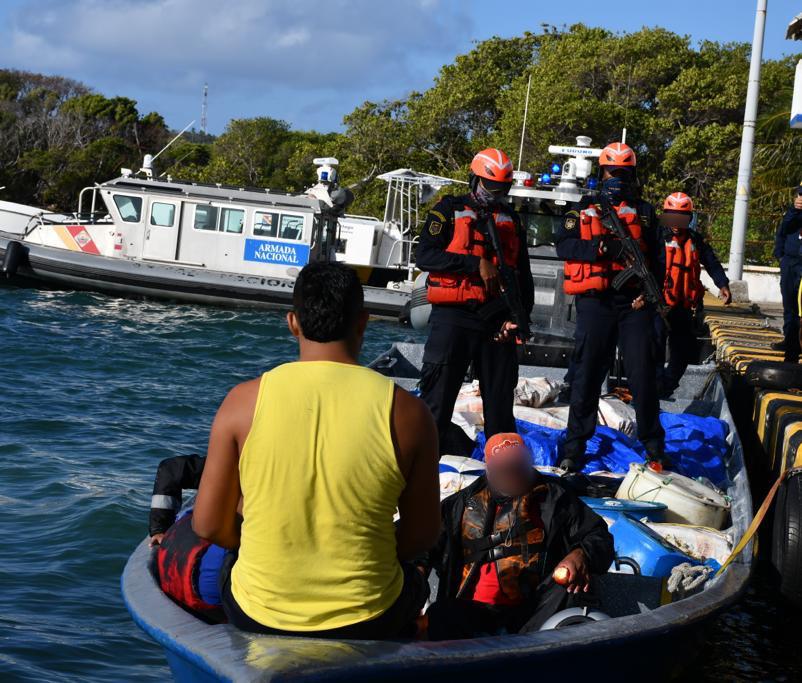A record cocaine seizure off the coast of Colombia’s San Andres is the latest in a string of million-dollar drug hauls in which speedboats were intercepted near the Caribbean archipelago, indicating the longstanding maritime trafficking route is still in favor.
The latest seizure came when a speedboat carrying 3.4 tons of cocaine, valued at $120 million, was intercepted 121 nautical miles off the coast of San Andres, according to a March 20 news release from the Colombian navy. Officials said the haul was a record for a lone speedboat in waters near the island, which sits closer to the Central American country of Nicaragua than to Colombia. Authorities arrested three Nicaraguan and two Costa Rican citizens aboard the boat.
SEE ALSO: Colombia’s San Andrés Losing Battle Against Illegal Fishing
The 3.4 tons of cocaine — bound for Central America — was an uptick from the 2.7 tons seized in September, when authorities nabbed a speedboat 160 nautical miles from San Andres. That drug shipment was also reportedly destined for Central America.
Authorities also netted several speedboats in the summer of 2021, including one in June that was hauling two tons of cocaine for the Urabeños, also known as the Gulf Clan, one of Colombia’s largest drug trafficking groups.
The route from the Colombian mainland to San Andres and on to Central America is one long used by trafficking groups. The Colombian navy has carried out joint operations with authorities from the United States, Costa Rica and Panama in nearby waters, seizing multi-ton shipments of cocaine.
InSight Crime Analysis
The frequency and size of these busts suggest that the Caribbean drug trafficking route remains a preferred option for Colombian traffickers, despite a heavy law enforcement presence.
In 2021, the Colombian Navy seized some 150 tons of cocaine in the Caribbean.
The San Andres archipelago’s location – just 110 kilometers from Nicaragua – places the islands in a strategic trafficking location. San Andres, though it belongs to Colombia, sits some 720 kilometers from the South American country’s northern coast, about a three-hour speedboat journey.
SEE ALSO: Colombia’s Drug Trafficking Paradise: San Andres Islands
The nationality of those arrested also follows previous patterns, as there have been various instances of Costa Rican and Nicaraguans being arrested while transporting cocaine via San Andres. One example is the case of Nicaraguan fisherman Ted Hayman Forbes, whose drug trafficking network existed across San Andres, Panama, Costa Rica and Nicaragua.
The Urabeños are the most likely group behind the latest series of intercepted boats, given that it is the main group running drugs through the archipelago.
The Cali Cartel first established a presence on San Andres in the late 1980s, and throughout the 1990s speedboats transited the waters near the Colombian island. In the early 2000s, the route was known to be used by the Rastrojos and the Urabeños, whose frequent conflicts included battling for control of the maritime trafficking route.

